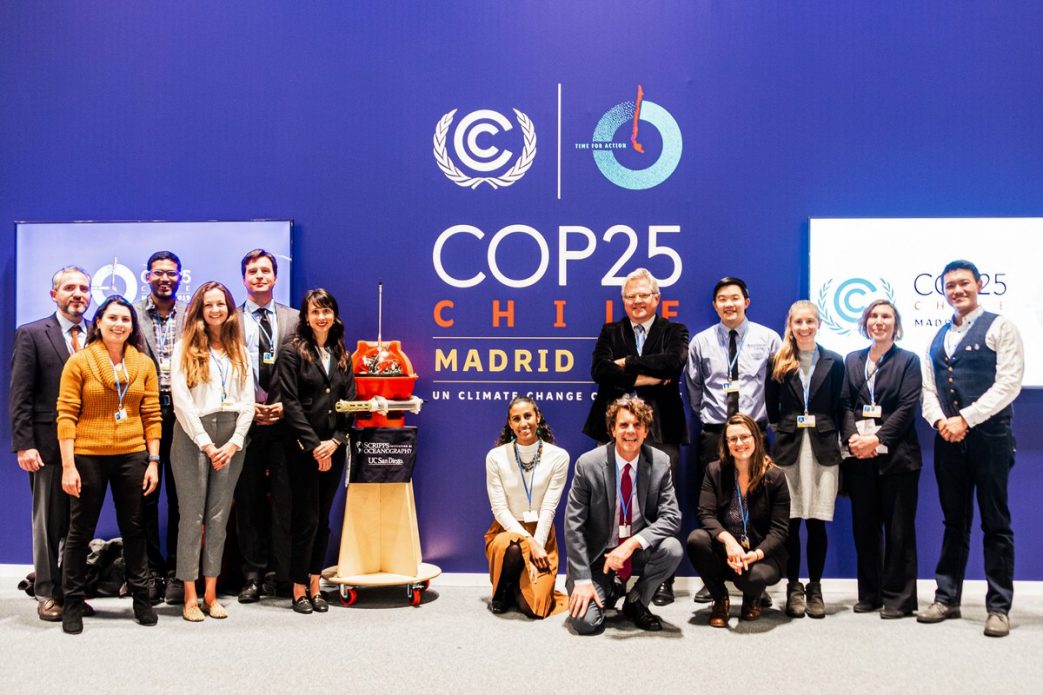An Inside Look at Blue COP25 via CCCIA Delegate Yassir Eddebbar
On Dec 7th, the United Nations (UN) 25th Conference of the Parties (COP 25), held in Madrid, Spain, celebrated Ocean’s Day. On this day, the UN focused its discussion on mitigation, impacts, and adaptation strategies centered on the ocean. Prompted by the publication of the new IPCC Special Report on the Oceans and Cryosphere (SROC) and a growing interest in ocean-related climate issues, this year’s UN climate meeting (2-13 Dec), dubbed “the Blue COP”, marks an important year for elevating the ocean’s role in mitigating climate change and understanding the impacts of climate change on marine ecosystems and ocean dependent communities.
On the ground, the Scripps delegation has been quite busy disseminating the broad and diverse set of climate research and observations currently underway at SIO. At the Scripps booth, a prototype of a deep Argo float, an autonomous float that can measure temperature and salinity at high precision down to 6,000 m depth, has garnered large interest from several high level delegates and world leaders, including our own US Speaker of the House Nancy Pelosi.
This year, I had the pleasure of joining the Scripps delegation’s efforts at COP 25 through virtual Blue COP25, an online platform initiated by Future Earth and designed to raise awareness on ocean-climate topics for audiences at COP25 in Madrid and elsewhere around the world. This 24-hr event was broadcast live and its recording made available on youtube, and aimed at connecting communities worldwide on the various ocean-related topics currently discussed at COP25.
My session focused on communicating the role of long-term observations in understanding climate change impacts and informing adaptation, focusing on Scripps observational efforts such as the global Scripps CO2 program (aka Keeling curve), the Argo program, and the CCCIA resilient future program. As communities worldwide begin to face the realities of rising sea level and a warming ocean due to increased atmospheric CO2, continuing and expanding these long-term global and regional monitoring programs will be critical to characterize mitigation needs, test climate models projections, and guide region-specific adaptation strategies. Tune in to learn more!
With over 20,000 attendees at COP25 from nearly every country in the world, an important step forward for future UN climate meetings is to reduce the massive carbon footprint associated with flight-related emissions and conference attendance (e.g. food, energy use, and transportation). For many events, online platforms such as Virtual COP 25 provide a sustainable and proven method for sharing knowledge and communicating science, all from the comfort of our homes and offices.


